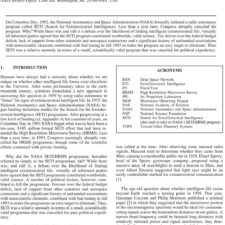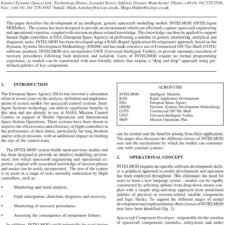Imaging Space Debris and Small Targets with Space-Based Radars and Dynamic Satellite Constellations — First Tests
£5.00
P. Blondel et al. (2019), JBIS, 72, pp.12-16
Refcode: 2019.72.12
Abstract:
Space debris is causing steadily increasing risks but many objects are not identified, limiting the scope of removal missions. We propose a dynamic satellite constellation with multiple EM receivers and transmitters, enabling multi- aspect imaging of targets through bespoke signal processing (beam-steering, synthesis of virtual apertures and dynamic beamforming to create virtual pencil beams to interrogate volumes of interest). This adaptive and modular architecture is used to build the first experimental stage toward a scaled demonstrator, using different radar transceivers and adaptive processing of echoes from moving targets. The algorithms developed are intended to be used aboard satellite nodes, with potential distribution of the most demanding tasks amongst neighboring nodes. This laboratory work is supplemented with analyses of US and European orbital debris databases, to identify the LEO portions most at risk from collisions, and to match the expected orbits and velocities of debris with the detection capabilities of the satellite constellation (ranges, fields of view, reaction times afforded by different configurations). These calculations inform the types of radars needed (frequencies, powers), whether in space and part of the constellations, or ground-based and used as sources of opportunities. Orbital constraints are used to match the number of nodes in the dynamic constellations with their respective positions, depending on propulsion modes and other considerations (general situational awareness). Focused on Near-Earth application, this method can be adapted to other areas (e.g. space mining). This approach aims to make future missions more affordable, de-risking space activities, protecting assets and preparing for future regulations.





